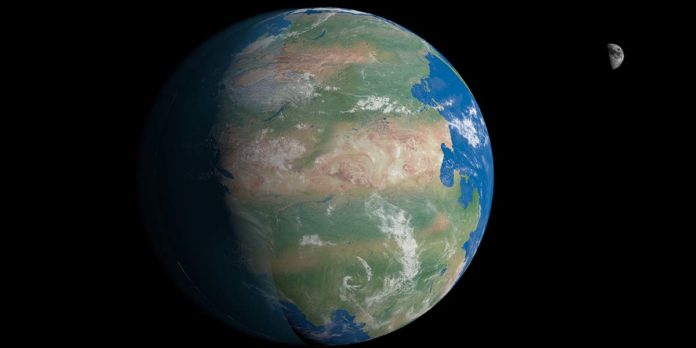Have you ever marvelled at how the continents seem to fit together like puzzle pieces? This is no coincidence, as they were once part of a massive supercontinent called Pangea. Journey with us as we explore the history of Pangea and how it ultimately broke apart to form the continents we know today.
The Formation of Pangea
Approximately 335 million years ago, during the late Paleozoic era, Earth’s landmasses began to merge, forming a single supercontinent called Pangea. This monumental event was driven by powerful forces beneath the Earth’s crust, known as plate tectonics. As tectonic plates moved and collided, they created vast mountain ranges and changed the face of our planet forever.
Pangea was a sprawling landmass, with an area of about 150 million square kilometres. It stretched from pole to pole, encompassing what is now Africa, Antarctica, Asia, Europe, North America, and South America.
Its immense size meant that its interior experienced extreme climate conditions, from scorching deserts to frigid ice caps.
Sub-headline: The Breakup of Pangea and the Birth of Today’s Continents
Around 175 million years ago, the same tectonic forces that created Pangea began to pull it apart. The supercontinent started to break up into smaller landmasses, eventually giving birth to the continents we recognize today.
This process, which is still ongoing, has had a significant impact on the Earth’s climate, geography, and distribution of species.
The breakup of Pangea occurred in two main stages: the initial split into Laurasia and Gondwana, and the subsequent fragmentation of these two landmasses.
Laurasia, which comprised present-day North America, Europe, and Asia, drifted northward, while Gondwana, consisting of Africa, Antarctica, Australia, and South America, shifted southward.
As these landmasses drifted apart, they created new ocean basins, such as the Atlantic and Indian Oceans. The formation of these oceans led to significant changes in the Earth’s climate and the distribution of heat and moisture, giving rise to distinct biomes and ecosystems across the continents.
Moreover, the separation of the continents resulted in the isolation of various plant and animal species, leading to the evolution of unique, region-specific flora and fauna.
The Lasting Legacy of Pangea
While Pangea ceased to exist millions of years ago, its legacy is still evident today. The distribution of fossils, mineral deposits, and rock formations across the continents provides evidence of their shared history.
For example, identical plant and animal fossils can be found on different continents, indicating that they were once part of the same landmass. Similarly, the alignment of mountain ranges and rock formations across continents supports the notion of a unified supercontinent.
Moreover, the story of Pangea and its breakup underscores the ever-changing nature of our planet. Plate tectonics continue to reshape Earth’s surface, as continents drift apart, collide, and even merge once again.
In the distant future, scientists predict the formation of another supercontinent, dubbed “Pangea Ultima,” as a result of ongoing tectonic movements.
In conclusion, the history of Pangea offers a fascinating glimpse into the dynamic forces that have shaped our world. Its breakup not only led to the formation of the continents we know today, but also influenced climate, geography, and the distribution of life on Earth.
As we continue to study and learn from this ancient supercontinent, we gain a deeper understanding of the intricate processes that govern our ever-changing planet. Who knows what future discoveries await as












